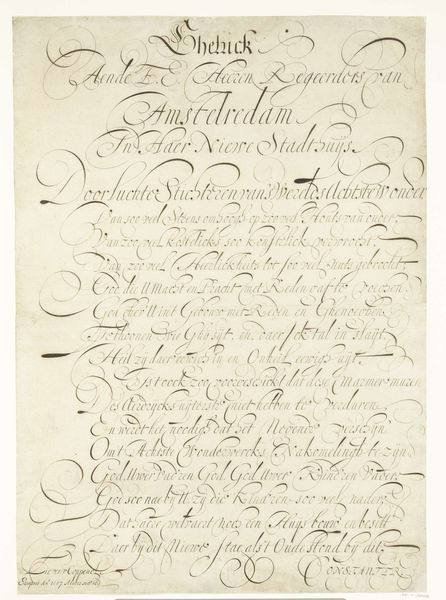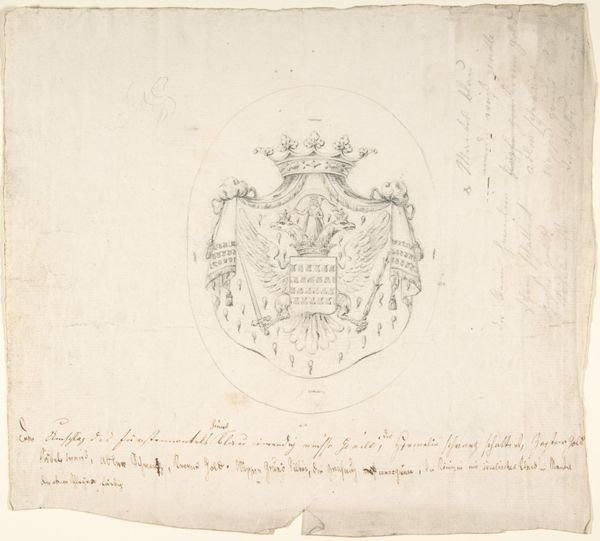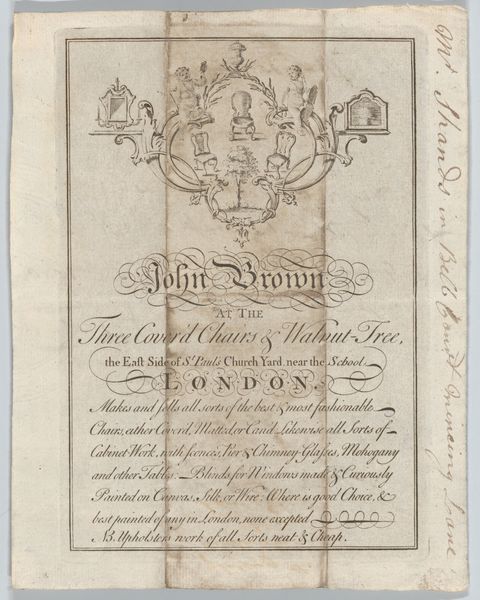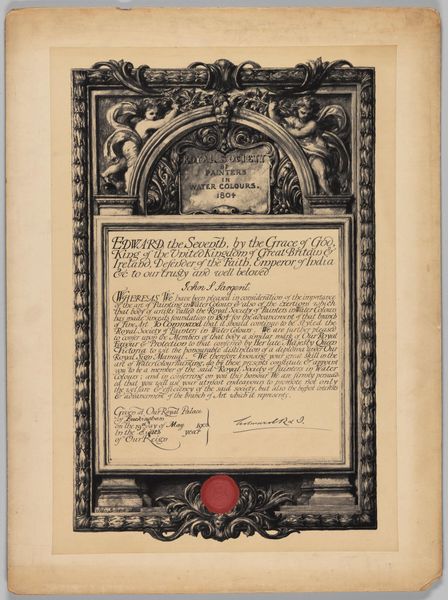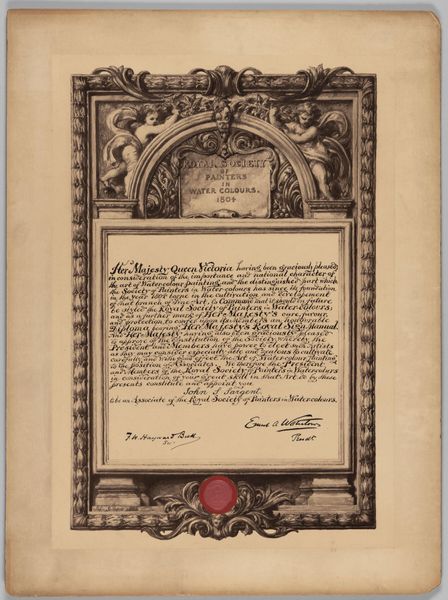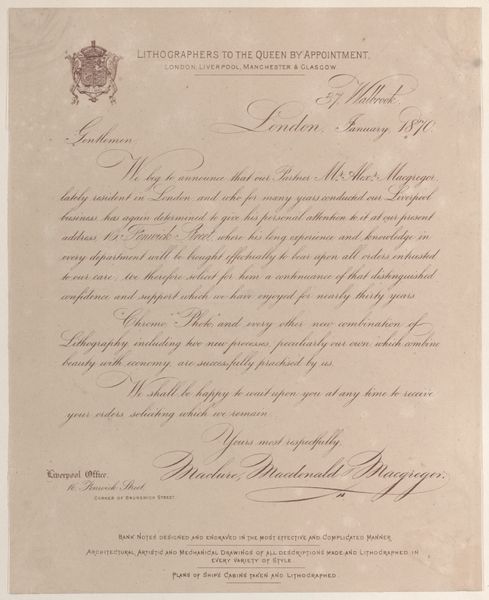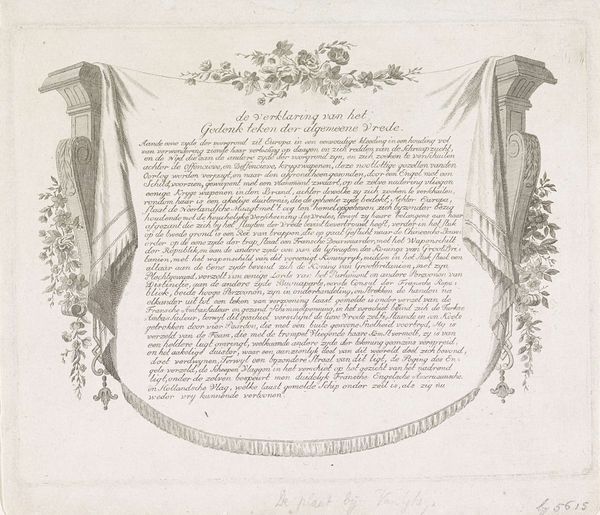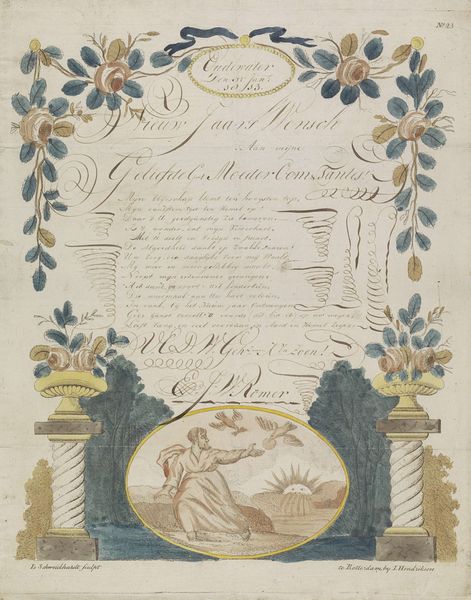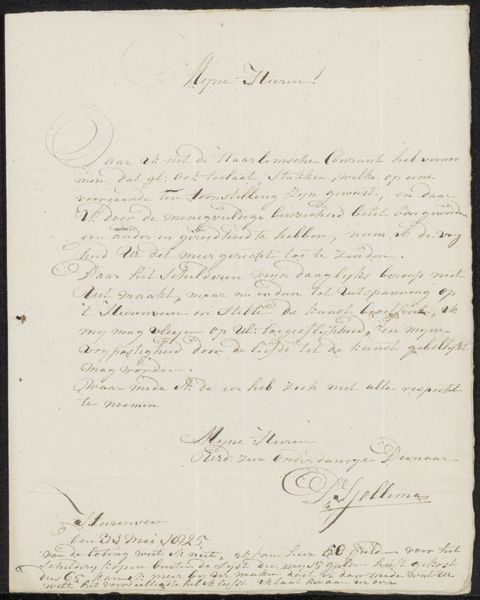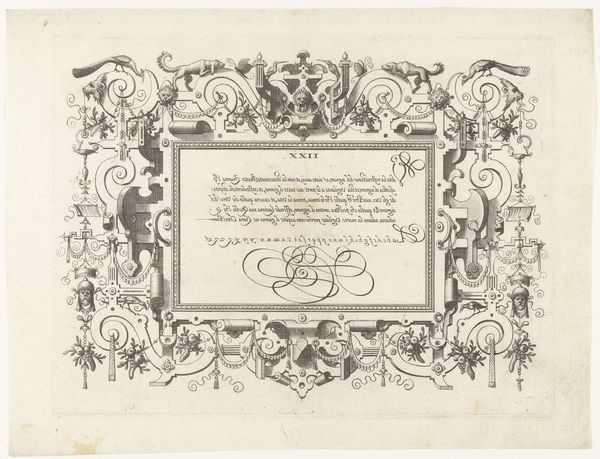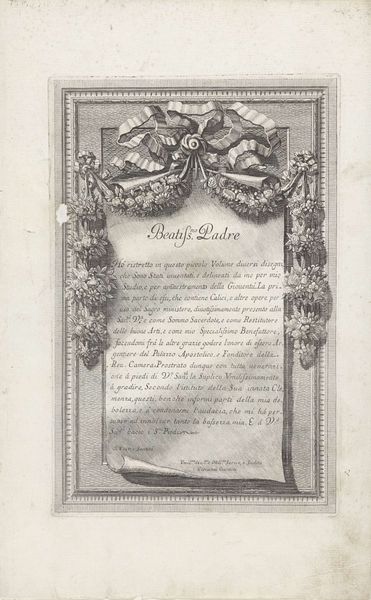
Royal Lisence and Copyright for Encyclopaedia Londinesis 1800 - 1900
0:00
0:00
drawing, print, paper, ink, engraving
#
drawing
#
neoclassicism
# print
#
paper
#
ink
#
academic-art
#
decorative-art
#
engraving
#
calligraphy
Dimensions: Sheet: 11 9/16 × 8 11/16 in. (29.3 × 22 cm)
Copyright: Public Domain
Curator: Here we have "Royal Licence and Copyright for Encyclopaedia Londinesis," dating from sometime between 1800 and 1900. It's an engraving printed in ink on paper and is currently held at the Metropolitan Museum of Art. Editor: The piece gives off a strong sense of formality, almost coldness, doesn't it? The limited color palette and precise lines amplify that. I immediately focus on the heraldic imagery at the top; the lion and unicorn feel particularly significant. Curator: Well, consider the document itself. It's a legal grant, ensuring sole printing and publishing rights for the Encyclopaedia Londinensis. The crest, calligraphy, paper, and print—these aren't merely decorative. They demonstrate power, control over production, and the commodification of knowledge. This license determined who could profit from this new information source. Editor: Absolutely. The lion and unicorn flanking the shield, symbols of British royalty, immediately convey authority. They function as cultural anchors, connecting this document to centuries of tradition and reinforcing the legitimacy of the crown's decree. And the elaborate script emphasizes the gravity of the text itself. Curator: I find it compelling how the artist is an anonymous figure here, whereas the printer and proprietor, John Wilkes, are named and legally empowered within the context of England’s economic infrastructures. This division speaks volumes about the hierarchies in play surrounding intellectual property during the height of print culture and nation-building. Editor: Looking at this document, I keep considering its implied audience. While intended for customs officials and printers, the visual cues—the crest, the calligraphy—also function to awe and perhaps even intimidate the general public. It communicates not just the legal protection but the cultural weight and imperial reach behind the encyclopedia. Curator: A privilege bought, protected by visual cues like heraldry, underlining the commodification of the very text it vouches for... It adds such layers of complexity. Editor: It certainly invites reflection on how symbols and legal instruments collaborate to shape our understanding of power and knowledge production. A rather stark picture when put like that.
Comments
No comments
Be the first to comment and join the conversation on the ultimate creative platform.
